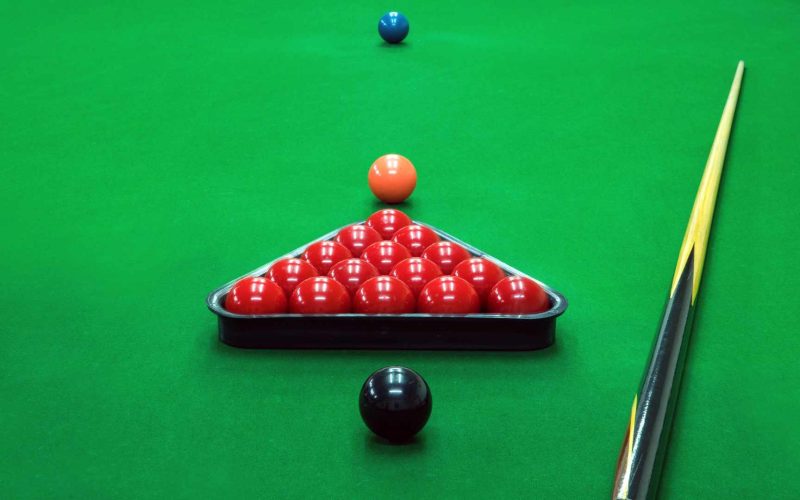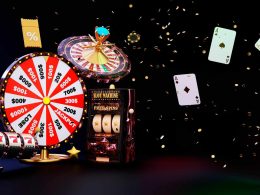What is it about the colour green that has become synonymous with the game of snooker? Have you ever wondered why snooker tables are always adorned in this vibrant hue? The answer lies in a rich history and tradition that spans generations. This blog post will explore the fascinating world of snooker table colours and why green has become an integral part of this beloved sport. From unravelling the historical significance to understanding its psychological effects on players, join us as we uncover why snooker tables are green. So grab your cue, sharpen your skills, and dive right in!
Why Are Snooker Tables Green?
Green is not just a random colour chosen for snooker tables; it holds great significance within the sport. The green cloth, or baize, covering the table surface plays a crucial role in gameplay. Its smooth texture and consistent roll allow players to execute precise shots with accuracy and control. Additionally, the contrast between the vibrant green cloth and colourful balls enhances visibility, making it easier for players to strategize their moves.
The colour green also represents tradition and heritage in snooker. It harks back to the early days of the game when tables were covered with plain green woollen fabric. Over time, this became synonymous with snooker, creating a visual identity that resonates with players and fans alike. So next time you step into a snooker hall or tune in to watch a match on television, take note of that vivid sea of green – it’s more than just an aesthetic choice; it’s an integral part of what makes snooker so unique and captivating.
The History of Snooker Table Colors
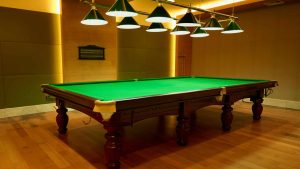
Snooker, a popular cue sport that originated in the late 19th century, has become synonymous with its distinctive green tables. But have you ever wondered why snooker tables are predominantly green? The history of snooker table colours can be traced back to its early roots.
Initially, snooker was played on billiard tables covered with various coloured cloths. However, it wasn’t until later that green became the preferred choice for snooker tables. This colour shift can be attributed to the rise in popularity of billiards and the desire to differentiate snooker from other cue sports. The vibrant and visually appealing shade of green soon became synonymous with the game itself, creating an iconic image recognized worldwide today.
The Importance of Baize in Snooker
Baize may seem simple, but it plays a crucial role in the snooker game. Made from woven wool or wool blend, baize covers the playing surface of the snooker table. Its primary purpose is to provide a smooth and consistent playing field for the balls.
The texture and quality of baize directly impact how the balls roll on the table. A well-maintained and properly stretched baize ensures no bumps or imperfections could affect gameplay. It also helps with ball control, as players rely on its grip to effectively apply spin and maneuver shots. Baize is essential in creating an optimal playing experience for professionals and amateurs.
Psychological Effects of Green Tables on Players
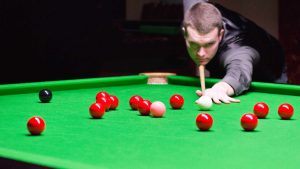
Green has long been associated with relaxation, balance, and harmony. In the world of snooker, the presence of green tables can have a psychological impact on players. The vibrant shade of green is believed to create a calming effect and enhance focus for amateur and professional snooker players.
When players step up to a green table, they are greeted by its soothing hue. This can help alleviate any nervousness or tension that may arise during gameplay. The colour green also reduces eye strain, allowing players to maintain their concentration for longer periods without feeling fatigued. Additionally, the perceived naturalness of the colour helps players feel connected to the game and enhances their overall experience.
Green tables in snooker contribute to the aesthetics and provide psychological benefits for both amateurs and professionals.
Are Snooker Tables Always Green?
Are snooker tables always green? The answer may surprise you. While green is the traditional colour for snooker tables, it’s not the only option available. There have been instances where snooker tables featured different colours.
Historically, green has been the preferred choice because it closely resembles the colour of grass. This connection to nature adds a sense of calmness and tranquillity to the game. Additionally, green is believed to enhance players’ focus and concentration levels.
However, in recent years, some variations have emerged. Snooker tables in shades of blue or even purple can be seen in certain tournaments or private clubs. These alternative colours are often chosen for their aesthetic appeal and uniqueness.
While green remains synonymous with snooker tables, it’s refreshing to see alternatives available for those looking to add a touch of individuality to their gameplay experience.
The Evolution of Snooker Table Colors
Snooker, a game known for its rich history and tradition, has seen the evolution of snooker table colours over time. While green has become synonymous with snooker tables, it wasn’t always the case. In the early days of snooker, tables were often covered in various colours, such as red, blue, or black.
However, in the 19th century, green started to dominate the scene. The colour was chosen primarily due to its visual appeal and contrast against the colourful balls used in the game. It provided players with a clear distinction between the playing surface and the balls, making it easier for them to focus on their shots. This shift towards green marked an important turning point in snooker’s history and laid the foundation for what we know today as traditional snooker tables.
The Significance of Green in the Snooker Community
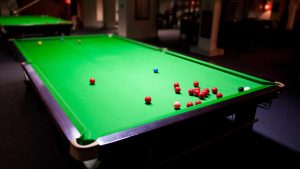
The colour green holds a significant place in the snooker community. It is not just a random choice but an emblematic representation of tradition and history. The vibrant green hue on snooker tables symbolizes this sport’s rich heritage and prestige.
Green has been the traditional colour for snooker tables since its inception. This colour was chosen because it provided optimal visibility for players to see the red balls against the baize. A psychological effect comes into play when players approach a green table. The calming and soothing nature of green can help players maintain focus and concentration during intense matches.
The significance of green in the snooker community cannot be underestimated. It represents traditional visibility and even psychologically affects players’ performance. So next time you watch or play snooker on a green table, remember there’s more to this colour than meets the eye!
Debunking Myths about Snooker Table Colors
Many things could be improved surrounding the colour of snooker tables. One common myth is that green was chosen because it is easier on the eyes. However, this is not true. The real reason for the green colour dates back to the early days of snooker when billiards and other cue sports were played on tables covered in green baize.
Another myth suggests that green baize was used to mimic grass, creating a natural environment for players. While this may seem plausible, it needs to be more accurate. The choice of green was purely practical rather than aesthetic.
The truth is that snooker tables are traditionally covered in green baize due to their durability and smooth playing surface. Green baize allows balls to roll smoothly and consistently across the table, providing players with optimal conditions for accuracy and control.
So next time you see a snooker table with its vibrant green cloth, remember there’s more to it than meets the eye. The colour serves a purpose beyond aesthetics – ensuring a fair game for all players.
Conclusion
The green colour of snooker tables has a rich history and significant symbolism in the world of snooker. It is not just a random choice but a carefully considered decision based on tradition, practicality, and psychological effects.
The use of green baize on snooker tables dates back to the early days when the game was first played. The colour was initially chosen for its resemblance to grass and ability to reduce eye strain. Over time, it became deeply ingrained in the culture and community surrounding snooker.
Green baize enhances visibility and adds an element of challenge and focus to the game. Players must adapt their strategies and techniques to perform well on this unique surface. The psychological effects of green tables are believed to create a sense of calmness, concentration, and anticipation among players.
While green remains the dominant colour for snooker tables worldwide, some have been attempting to explore alternative colours. However, these endeavours have largely been met with resistance from players who value tradition and believe that any deviation from green would detract from the essence of the game.
Debunking myths about snooker table colours is important, as misinformation can confuse enthusiasts. Green does not necessarily improve player performance or indicate superiority; it is integral to creating a conducive playing environment.
So next time you watch a thrilling match unfold on your TV screen or step into a local billiards hall where professionals compete fiercely – remember why those tables are green!





